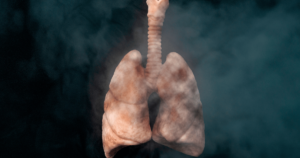Table of Contents
Lung Cancer and Smoking

Lung cancer is a serious health concern globally, and one of the primary risk factors associated with it is smoking.
This article delves into the intricate relationship between smoking and lung cancer, addressing the risks, preventive measures, and frequently asked questions surrounding this topic.
Smoking and Lung Cancer Risks
The link between smoking and lung cancer is well-established by scientific research. Cigarette smoke contains numerous carcinogens,
which are substances known to cause cancer. When these carcinogens are inhaled, they can damage the cells in the lungs and lead to the development of cancerous tumors.
Studies have shown that individuals who smoke are at a significantly higher risk of developing lung cancer compared to non-smokers.
The risk increases with the duration and intensity of smoking. Even exposure to secondhand smoke can elevate the risk in non-smokers.
Prevention Strategies
for lung cancer primarily focuses on actionable measures to mitigate the risks associated with lung cancer, particularly those linked to smoking. It emphasizes the significance of individual efforts in combating this severe health issue.
- Smoking Cessation: This is highlighted as the most critical step in reducing lung cancer risk. The paragraph suggests several approaches to quitting smoking:
- Seeking Professional Help: It encourages consulting healthcare professionals for guidance and support.
- Utilization of Cessation Aids: This might include nicotine replacement therapies, prescription medications, or other tools designed to help individuals quit smoking.
- Joining Support Groups: Participation in groups for mutual support and sharing experiences with others trying to quit smoking is recommended. These groups can offer emotional support and practical tips for overcoming the addiction.
- Avoidance of Secondhand Smoke: The paragraph underscores the importance of minimizing exposure to secondhand smoke as a preventive measure. This involves:
- Creating Smoke-Free Environments at Home: Ensuring that personal living spaces are free from tobacco smoke.
- Advocacy for Public Smoke-Free Policies: It suggests actively supporting measures to establish smoke-free zones in public spaces, thereby reducing overall exposure to secondhand smoke in the community.
- Regular Health Check-ups: Emphasizing preventative healthcare, the paragraph advises:
- Routine Medical Screening: Regular check-ups and health monitoring to identify any health issues early.
- Lung Cancer Screenings for High-Risk Groups: For individuals who are at increased risk of lung cancer, such as long-term smokers or those with a family history of the disease, specific lung cancer screenings are recommended. These screenings can help detect lung cancer at an earlier, more treatable stage.
Overall, the paragraph outlines a comprehensive approach to lung cancer prevention, combining lifestyle changes, proactive healthcare measures, and community advocacy to reduce the risk and impact of this disease.
Frequently Asked Questions
- Q: Can non-smokers get lung cancer?A: Yes, while smoking is a primary risk factor, non-smokers can also develop lung cancer. Other factors, such as exposure to radon gas and genetic predisposition, play a role.
- Q: How long does it take for smoking to increase the risk of lung cancer?A: The risk begins to decrease once a person quits smoking. However, it may take many years for the risk to drop significantly.
- Q: Are e-cigarettes a safer alternative?A: While e-cigarettes may be considered less harmful than traditional cigarettes, they are not entirely risk-free. The long-term health effects are still being studied.
Conclusion
In conclusion, understanding the connection between lung cancer and smoking is crucial for public health. Taking steps to quit smoking and advocating for smoke-free environments are essential in reducing the prevalence of lung cancer. Regular screenings and awareness campaigns can contribute to early detection and improved outcomes for those at risk.



